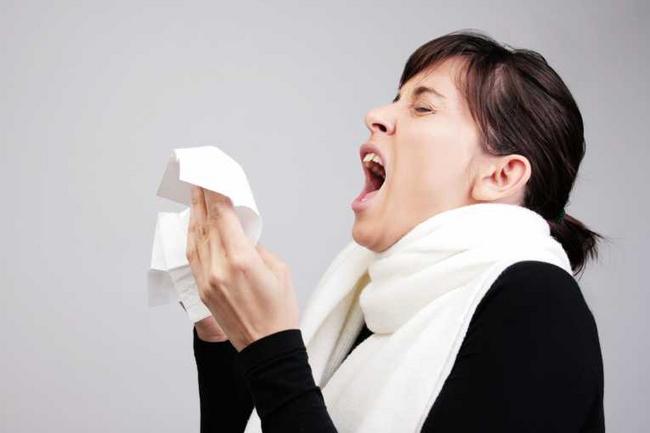
Hay fever is a disease of the mucous membrane of the upper respiratory tract most often characterized by sneezing, runny nose, and itchy, watery eyes usually caused by an abnormal sensitivity to airborne allergens. The symptoms are sometimes confused to be of common cold or flu. Therefore, a diagnosis is required to be done to distinguish it from other similar ailments. Prevention is the best cure for this ailment that is to avoid exposure to specific allergens.
Causes of Hay Fever
1. Seasonal allergens
Tree, grass, or ragweed pollens constitute seasonal allergens.
2. Year-round allergens
Dust mites, cockroaches, molds, and animal dander (scurf from the coat or feathers of various animals) cause perennial allergies.
Signs and Symptoms
1. Rhinorrhea (increased nasal discharge).
2. Itchiness of nose, soft palate, and throat.
3. Sneezing.
4. Nasal congestion.
5. Red, swollen conjunctiva with swollen eyelids.
6. Collection of fluid in the middle ear felt as blocked up feeling in the ear.
Problems associated with Hay fever
1. Reduced concentration
Hay fever causes decreased concentration. It is a major cause of absenteeism from work.
2. Sleep disorder
Hay fever symptoms can keep the patient awake or make it hard to stay asleep.
3. Exacerbation of asthma
Hay fever can lead to development of asthma and often makes it worse when both are present concomittantly.
4. Sinusitis
Hay fever can increase the susceptibility to sinusitis, an inflammation of the lining membrane of the sinuses.
5. Otitis Media
In children, untreated hay fever can lead to otitis media (middle ear infection).
Diagnostic tests
There are usually two main types of tests performed to identify the agent/s causing this condition:
1. Skin Prick Test
Small amounts of allergens are injected into the skin and the patient is observed for signs of allergic reaction. Development of erythematous (reddish) area around the inoculation site indicates positive test and the material injected is considered to be allergic.
2. Allergy blood test
Radioallergosorbent (RAST) test is done to measure the immune response to a specific allergen. The test measures the amount of allergy-causing antibodies (immunoglobulin E or IgE) in the bloodstream of the patient.
Treatment
1. Symptomatic treatment
Usually three types of medications provide symptomatic relief in this condition.
a. Corticosteroids
Corticosteroid can be given systemically in the form of pills or in the form of nasal spray. Pills such as prednisone are used to relieve severe allergy symptoms, but long-term use can cause serious side effects such as cataracts, osteoporosis, or muscle weakness. In the form of nasal spray such as fluticasone, mometasone, or beclomethasone, these medications calm down the symptoms of hay fever without producing the systemic side effects of the corticosteriods. Local use can produce bad taste and smell and nose irritation.
b. Antihistamines
These preparations are usually given as pills, nasal sprays, or eye drops. Antihistamines help in nasal irritation and discharge and itching, but have less effect on congestion. One of the main side effect of these medications in the form of oral pills is that these medications produce drowsiness, e.g., chlorpheniramine maleate, but there are some preparations that do not produce drowsiness e.g. loratadine, cetirizine, and Fexofenadine. Antihistamines in the form of nasal sprays are azelastine and olopatadine and in the form of eye drops is Olopatadine.
c. Decongestants
These medications are available as liquids, tablets, and nasal sprays. Oral decongestants are commercially available as Sudafed, Actifed. and Drixoral. Their side effects include raised blood pressure, insomnia, irritability, and headache. Nasal sprays include phenylephrine and oxymetazoline. Use of decongestant nasal sprays for more than 2-3 days can produce rebound congestion.
2. Specific Treatment (Immunotherapy)
In immunotherapy for this condition, allergy shots are given over a period of several years in order to let the body get used to the allergens that cause the symptoms thereby decreasing the need for medications. It is especially effective if allergen is detected as cat dander, dust mites, or pollens. In children, immunotherapy may help prevent the development of asthma.
3. Naturotherapy – Nasal Lavage
There is a procedure called nasal irrigation, nasal lavage, or nasal douch which provides relief of symptoms the natural way without subjecting the body to any harmful chemicals. Rinsing the nasal passages with normal saline is a quick, inexpensive, and very effective way to relieve nasal congestion as it directly flushes out mucus and debris from the nose.
Preventive Measures
It is not possible to completely avoid allergens, but we can take steps to limit the exposure to them, especially if we know exactly what we are allergic to.
1. Staying indoors during pollen season and dry, windy days.
2. Use of air conditioning.
5. Use a dehumidifier to reduce indoor humidity.
6. Wearing a dust mask during performance of outdoor activities such as gardening.
7. Using allergy-proof covers on mattresses and pillows.
8. Vacuum cleaning instead of using broom or duster for cleaning house.
9. Blocking cracks, fixing leaks, washing dishes early, emptying garbage daily, and sweeping food crumbs from kitchen counter to prevent cockroaches from entering and growing in the house.
10. In case of allergy through pet dander, removal of pets from the house or at least keeping them out of the bedroom is advised.
Frequently Asked Questions
1. What are the different types of hay fever?
Hay fever are of two types – seasonal and perennial. Seasonal type can be seen in a particular season whereas the perennial type can be seen throughout the year.
2. Is the hay fever contagious?
No, hay fever is not contagious.
3. Is the hay fever is hereditary?
Yes, studies suggest that if parents have allergies, their children are more likely to have allergies and hay fever is caused by allergy.




